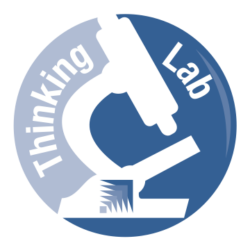Tactic: Brook Castillo’s “Self-Coaching Model”* Overview
What: The self-coaching model is a tactic that helps you activate a value-oriented context instead of a threat-oriented context.
When: Use the self-coaching model anytime you notice a “wrong premise” in your thinking or a general threat-orientation. It is particularly helpful as part of self-direction to create a positive sense of urgency.
How: 1. Do a thought download. 2. Identify a thought that seems to be triggering a lot of threat-oriented motivation. 3. Work out the “model” for that thought. 4. Reflect on how that thought is causing a vicious cycle. 5. Explore value-oriented thoughts based on the same facts to find a thought that triggers a virtuous cycle, right now.
Why: The words you use to identify challenges and motivate yourself matter, because they activate a corresponding context. When the right context is activated, it takes less effort to act on your rational intentions.
The “Model”—the Causal Sequence that Triggers Motivation Loops:
C: Circumstance: The situation, stated neutrally, without opinion or evaluation.
T: Thoughts: Sentences in your mind that are triggered from the subconscious in response to external and internal stimuli.
->May be true or false, valid or invalid.
F: Feelings: Affective responses to your thoughts, including both emotions and mind/body states.
A: Actions: The actions you take or don’t take when feeling that feeling.
->These are not the actions you should take, but the ones that follow causally from whatever affect (feelings) you are feeling.
R: Results: The results in your life of the actions you take or don’t take.
->All of your power to influence results is in your choice of thought to focus on.
Thoughts about circumstances cause emotions. Emotions motivate action. Actions produce results. Results are not primarily caused by the circumstances, but by how you think about the circumstances.
Steps to use “The Self-Coaching Model” to re-orient to values
- Do a 1-page “thought download” about the situation.
- Pick out a thought that is triggering threat-oriented It could be something you have already identified as a “wrong premise” or “self-defeating belief” or not.
- Work out the other four elements of the model that correspond to that (This is the “unintentional model.”)
- Reflect on how your thought causes a vicious (It causes the results, which in turn provide evidence for the thought.)
- If the results are not what you want, test other thoughts you could have about the circumstances that focus you on rational values and trigger value-oriented Create an alternate model for that thought. (This is the “intentional model.”)
Get a one-on-one coaching session on this tactic.
References in the Thinking Lab:
- The Self-Coaching Model (handout)
- All About Emotions
- Self-Direction: Theory & Practice Series
- The Work of Happiness
* This is my adaptation of Brooke Castillo’s method.

